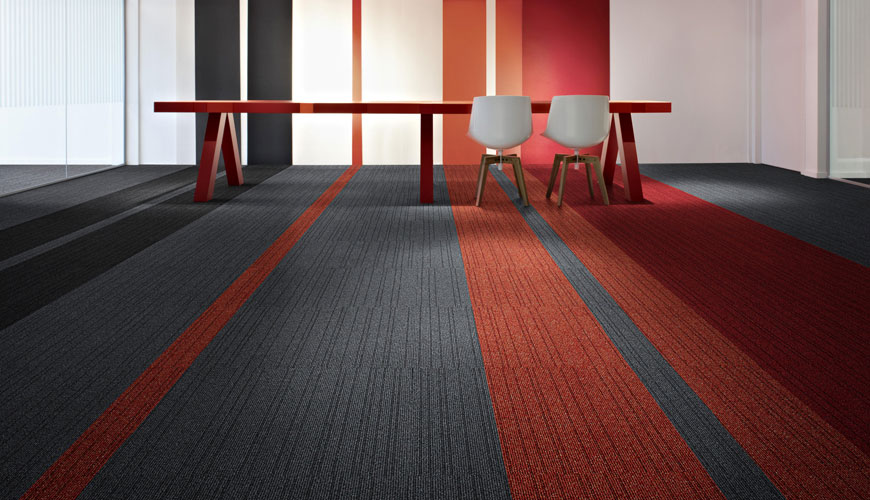

EUROLAB laboratory provides testing and compliance services within the scope of EN 424 standard. This standard specifies a method for determining the resistance of an installed resilient floor covering to mechanical stress caused by the simulated movement of a furniture leg.

Flexible floor coverings are known for their flexibility and are used in many places today. Tile rubber floor coverings are coatings in which small pieces of rubber material that are harmless to health are combined and pressed and ready for use. Rubber tiles are divided into EPDM and SBR. SBR is generally produced from recycled materials. Customer preferences may differ according to usage areas. SBR tile rubber flooring products are mostly preferred outdoors.
EPDM stands for EthylenePropylene Diene Monomer. This material is highly resistant to heat, oxidation, ozone, weather and atmospheric conditions. In addition, phosphate, glycol based brake oils are highly resistant to water vapor, ozone and weather conditions. EPDM is resistant to weather conditions and impact resistance due to its elastic properties. Usage degrees can be up to 150 C⁰. EPDM materials are not resistant to oils and hydrocarbon solvents. EPDM is widely used in the automotive and industrial sectors due to the very good strength of the materials in static and dynamic applications.
The resistance of an installed floor covering to the movement of a furniture leg with rounded edges and varying loads is evaluated for unevenness of the surface, surface damage, cuts of varying depths and penetrating edges.
Ensure that the test paths are at least 100 mm from the edge of the test piece. Two separate test paths should be chosen where the structure of the floor covering may result in different results for tests in different directions, i.e. the longitudinal and transverse directions or the main relief lines in the pattern for sheet floor coverings or positioned alternately parallel to and diagonally to the edge for tiles or tiles.
The test piece and guide rails should be checked to ensure they are horizontal. The dust on the test piece must be removed. The appropriate foot should be fixed to the bottom of the platform with both sides parallel to the frame rails. The carrier and platform are placed on the rails and the test piece, and then the mass is placed on the platform.
After 1 minute, the free end of the cable (which rotates once around the capstan) is pulled without exceeding a force of 150 kN to move the entire unit horizontally at a rate of 1 mm/sec. 700 mm/sec at a distance of approx. 200 mm.
This European Standard specifies a method for determining the resistance of an installed resilient floor covering to mechanical stress caused by the simulated movement of a furniture leg.
EUROLAB, with its more than 25 years of experience, state-of-the-art accredited laboratories and expert team, helps you get precise and fast results.
To get an appointment, to get more detailed information or to request an evaluation, you can ask us to fill in our form and reach you.